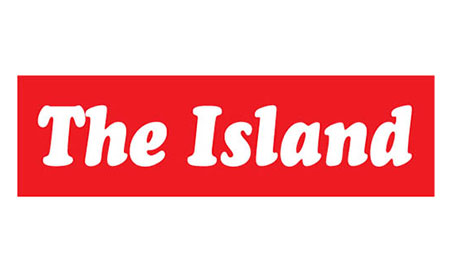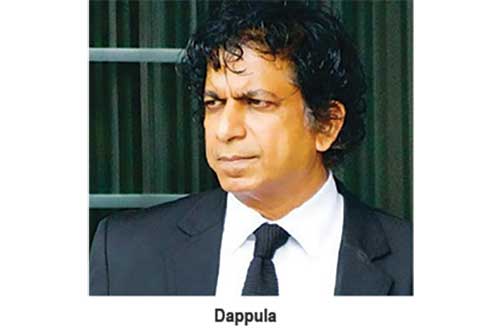news
Tough guidelines laid down by Health Ministry appointed Experts Committee for burial or cremation

by M.A. Kaleel
Recommendations of the Health Ministry appointed Experts Committee comprising Virologists, Microbiologists and Immunologists to revisit the guideline (1) on disposal of corpses of persons infected with SARS – CoV – 2 virus has released the following recommendations.
1. The dignity of the dead and their families should be respected and protected as far as possible throughout the process used for the disposal of the body.
2. Designated healthcare personnel should only do the handling of the corpses.
3. The body should not be handed over to the relatives for cremation or burial.
4. Ensure all those who interact with the body (the healthcare and mortuary staff) apply standard infection prevention and control (IPC) precautions. Continuous and adequate hand hygiene supplies, PPE, cleaning and disinfection supplies should be made available.
5. The bodies for cremation or burial should not be embalmed.
6. The cremation or burial should be carried out within 24 hours, once the order for disposal of the body is given.
7. The body should be laid inside a double layered body bag, prior to placing in the coffin. The body bags should be of 300 um thickness, padded with absorbent material, leak proof and non-biodegradable.
8. Viewing of the body will be permitted only within the healthcare facility/mortuary.
9. If the family wishes to view the body, open/unzip the body bag and allow them to view the body at a one-meter distance wearing a mask and keeping a distance of one meter from each other. Touching the body or the belongings of the dead person is not permitted. The body should not be removed from the body bag for viewing.
10. Only 4 persons from the family will be allowed to view the body. Two persons at a time should be allowed to view the body and a maximum period of 5 min/per two persons should be allowed for viewing the body under supervision. A total period of 10 min is allowed for viewing the body.
11. When the body is transported to a crematorium/burial site by health authorities, a maximum of 4 persons from the family could be permitted to accompany the body in a separate mode of transport.
12. The crematorium/burial site designated by the healthcare authorities should be used for disposal of the body.
13. The coffin shall not be opened for any reason at the crematorium or the burial site.
14. Allow 10 minutes for any religious activity under supervision at the crematorium/burial site prior to cremating/burying while observing social distancing and standard precautions. Only one religious dignitary and 4 persons from the family will be permitted to be present during the religious activity.
15. The bottom of the grave should be 1.5 m from the ground surface and 1.2 m above the water table. The distance between burial site and field drains should be 10 m minimum. The distance between burial site and drinking wells, boreholes, and wells should be 250 m minimum. The distance between burial site and springs and water courses should be 30 m minimum as per current recommendations by Global experts.
- News Advertiesment
See Kapruka’s top selling online shopping categories such as Toys, Grocery, Flowers, Birthday Cakes, Fruits, Chocolates, Clothing and Electronics. Also see Kapruka’s unique online services such as Money Remittence,News, Courier/Delivery, Food Delivery and over 700 top brands. Also get products from Amazon & Ebay via Kapruka Gloabal Shop into Sri Lanka.
news
Test post
sdfsdf sdf sf sf sdf sf sdf
news
AG not bound by its recommendations, yet to receive report

PCoI on Easter Sunday attacks:
By Shamindra Ferdinando
Attorney General Dappula de Livera, PC is not bound by recommendations made by the Presidential Commission of Inquiry (P CoI) into the 2019 Easter Sunday carnage, or presidential directives in that regard, according to authoritative sources.
They said that the AG couldn’t under any circumstances initiate legal proceedings until he had received the full PCoI report.
President Gotabaya Rajapaksa received the PCoI report on Feb 1. The President’s Office delivered a set of PCoI reports to Speaker Mahinda Yapa Abeywardena on Feb 23, a day after the report was presented to the cabinet of ministers. The Island raised the matter with relevant authorities in the wake of a section of the media reporting the PCoI recommending punitive measures against former President Maithripala Sirisena, Defence Secretary Hemasiri Fernando, IGP Pujitha Jayasundera, Chief of State Intelligence Senior DIG Nilantha Jayawardena, Chief of National Intelligence retired DIG Sisira Mendis and All Ceylon Makkal Congress (ACMC) leader and Samagi Jana Balavegaya MP Rishad Bathiudeen et al over the Easter Sunday carnage.
Sources pointed out that due to the inordinate delay in sharing the PCoI report with the AG, the department hadn’t been able to take preliminary measures required to initiate the proceedings. Sources said that a team of officers would take at least six weeks or more to examine the report before tangible measures could be taken.
With the AG scheduled to retire on May 24, 2021, even if the AG Department received the P CoI it would be quite a tough task to initiate proceedings ahead of retirement, sources said. However, in terms of the 20th Amendment to the Constitution enacted in last October, both the AG and the IGP could receive extensions beyond 60 at the President’s discretion.
Dappula de Livera received an Acting appointment as the AG a week after the Easter Sunday carnage whereas his predecessor Jayantha Jayasuriya, PC, was elevated to Chief Justice.
Responding to another query, sources said that the Attorney General two weeks ago requested Secretary to the President for a copy of the P CoI. However, the AG was yet to receive one, sources said. In spite of the AG not receiving a P CoI copy, the AG had instructed the IGP to obtain a copy of the report when he requested the police to complete investigations into the Easter Sunday carnage. The AG issued specific instructions after having examined police files pertaining to the investigations.
The IGP, too, hadn’t received a copy so far though some sections of the report were in the public domain.
Agriculture Minister Mahindananda Aluthgamage displayed at a live political programme on Derana a copy of the P CoI report he received at the cabinet meeting earlier in the day.
Sources said that the Attorney General’s Department couldn’t decide on a course of action in respect of the Easter carnage on the basis of a section of the report. In terms of the Commission of Inquiry Act (Section 24), the AG enjoyed significant powers/authority in respect of investigations; sources said adding that the Department urgently required both the P CoI report and police investigations report. The Attorney General’s Department has raised the delay in receiving a P CoI report amidst the Catholic Church attacking the government over the same issue.
Sources said that ministerial committee appointed to study the P CoI report couldn’t decide on how to proceed with the recommendations and the matter was entirely in the hands of the AG. Sources pointed out that the delay on the part of the government to release the report had received the attention of sections of the international media, including the New York Times. Public Security Minister retired Rear Admiral Sarath Weerasekera having met Malcolm Cardinal Ranjith at the Bishop’s House on Dec 8, 2020 said that the AG would get a copy of the P CoI report once the President received it. Minister Weerasekera said that the CID had handed over the relevant files after having completed investigations into eight blasts. Referring to the Parliamentary Select Committee (PSC) report on the Easter Sunday carnage, the former Navy Chief of Staff said that all such documents would have to be brought to one place and considered before initiating legal proceedings. Acknowledging that there could be delays, lawmaker Weerasekera said that on the instructions of the Attorney General a 12-member team of lawyers was working on the case. The minister vowed to expose the mastermind behind the Easter Sunday attacks. Investigations continued while some of those wanted were overseas, the minister said.
The minister acknowledged that the Attorney General couldn’t proceed without the P CoI report. Minister Weerasekera reiterated that once the President received the P CoI report, it would be sent to the Attorney General. The minister said that there were documents two to three feet high that needed scrutiny. The minister assured comprehensive investigation. The minister said that investigations pertaining to eight blasts had been completed and the reports handed over to the AG. However, the Attorney General had found shortcomings in those investigations.
news
JVP picks holes in PCoI report

By Saman Indrajith
The Presidential Commission of Inquiry on the Easter Sunday bombings had failed to identify the mastermind of , the JVP said yesterday.
Addressing the media at the party headquarters in Pelawatte, JVP Propaganda Secretary MP Vijitha Herath said that the PCoI report had levelled accusations against former President Maithripala Sirisena, former IGP and head of intelligence for their dereliction of duty, shirking of responsibilities and not taking action to prevent the attacks and negligence. There were reference to the causes of the terror attacks and actions to be taken to avoid such attacks and the influence of extremist organisations. “However, there is no mention of the mastermind of the attacks, the handlers of the attackers and those whose interests the carnage served. It is also not mentioned whether there has been any foreign or local organisation behind those attacks. As per the PCoI report the attack took place as a result of culmination of extremism.
“According to the PCoI the extremist activities were a result of the prevailing political situation then. The entire nation was waiting to see who was responsible and who masterminded those attacks. The PCoI has failed to identify the true culprits responsible for the terror attacks. The report says that the leader of the suicide cadres killed himself in the attacks and it was a puzzle. That means those who are actually responsible for the attacks are still at large. The report does not provide exact details of the sources of the attacks. The PCoI had sittings for one year and five months. It summoned various persons and got their statements but it has failed to shed any light on the terror attacks. Everybody knows that the top leaders of the government and heads of security and intelligence establishments failed in their duties. Ranil Wickremesinghe was the second in command and he too is bound by the responsibility but the PCoI report fails to identify him as one of the persons against whom legal action should be instituted. The PCoI has treated Wickremesinghe and former President Maithripala Sirisena differently. We are not telling that this report is a total failure but we cannot accept this as a complete report. The PCoI handed over its report to the President on Feb 1. After 23 days it was sent to Parliament. Now, a copy of the report is there in the parliamentary library for the perusal of MPs.”
Herath said that the PCoI did not have powers to take punitive action. “It only has powers to name those responsible and recommend action to be taken against those named.









